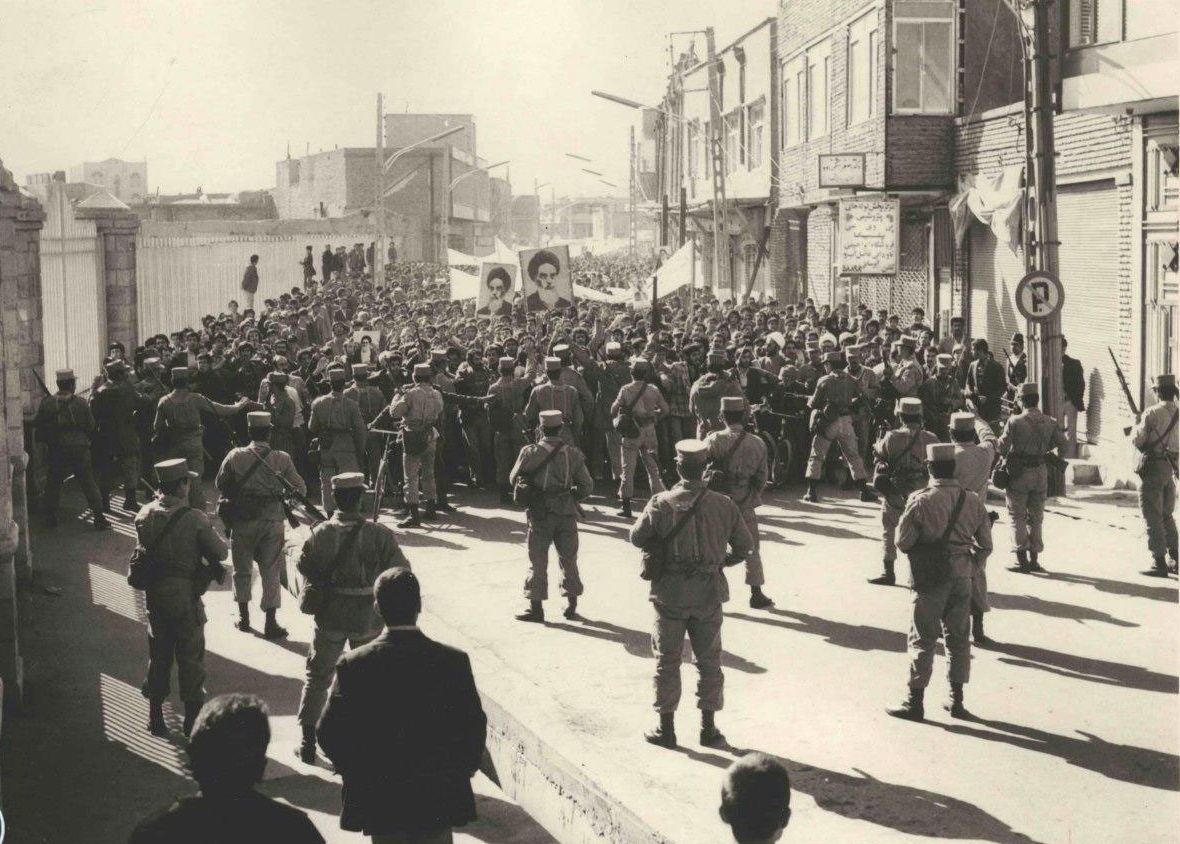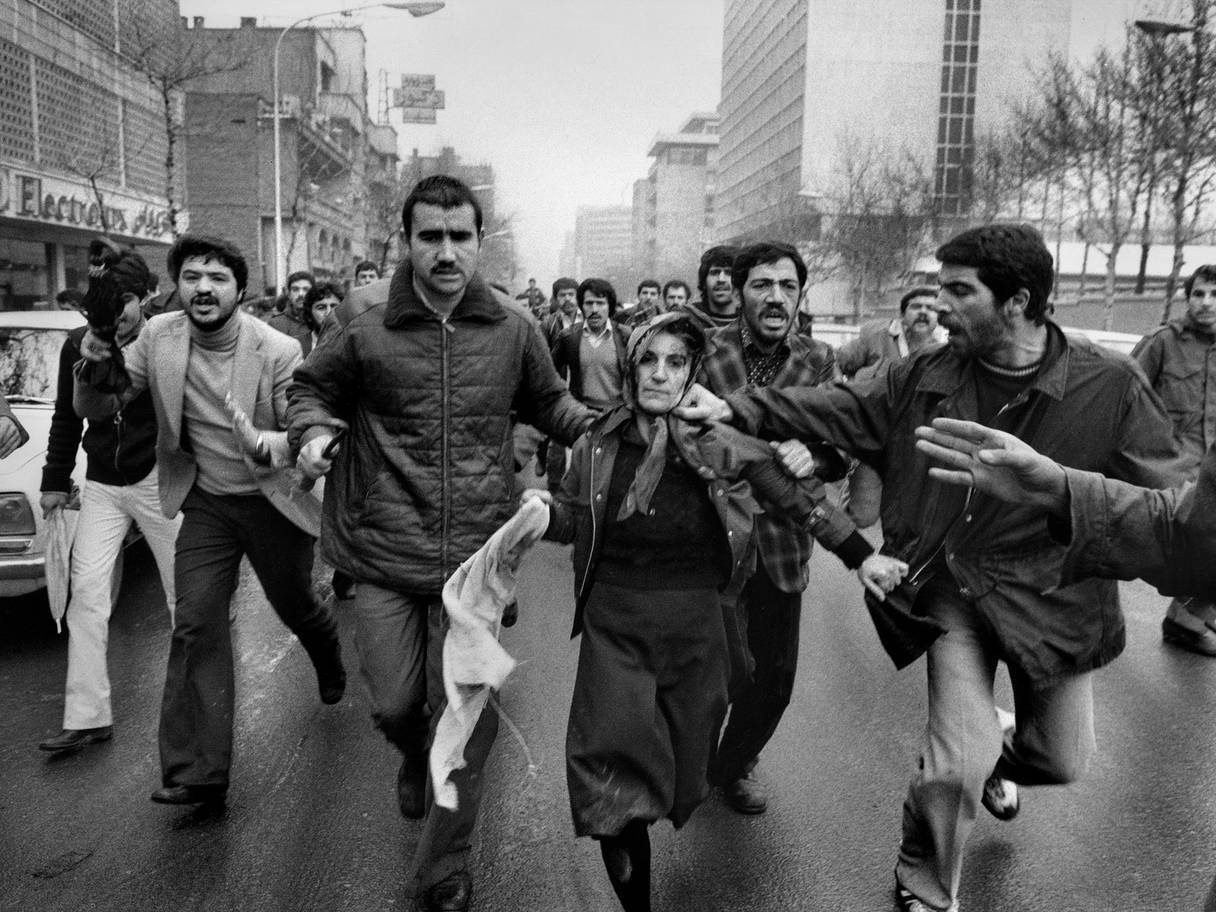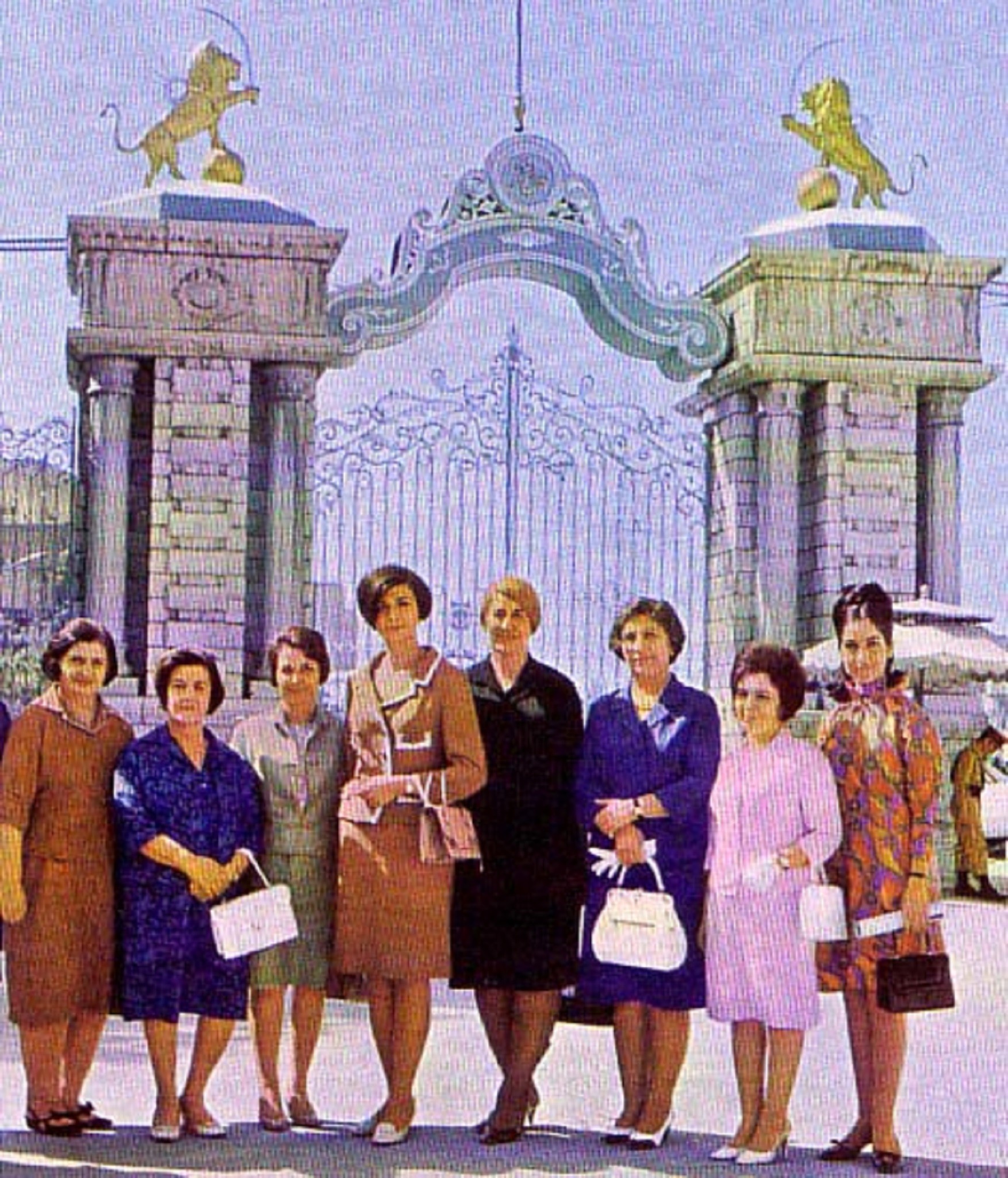1979 Iran: Unraveling The Islamic Revolution's Seismic Shift
The year 1979 stands as a monumental turning point in global history, largely defined by the seismic events that unfolded in Iran. What began as widespread discontent against a seemingly entrenched monarchy culminated in a profound societal upheaval known as the Iranian Revolution. This wasn't merely a change in government; it was a fundamental reordering of a nation's identity, with repercussions that continue to shape the geopolitical landscape today. Understanding the complexities of 1979 Iran is crucial for grasping the trajectory of the Middle East and the broader Islamic world.
Often referred to as the Islamic Revolution of 1979, or simply the 1979 Revolution, this series of events marked the dramatic overthrow of the Pahlavi dynasty. For centuries, Iran had been governed by monarchical rule, a tradition stretching back 2,500 years. Yet, in a matter of months, this ancient system was dismantled, replaced by an Islamic Republic. This article delves into the intricate causes, key figures, and lasting impacts of this watershed moment, providing a comprehensive look at the forces that converged to redefine 1979 Iran.
Table of Contents
- The Pahlavi Dynasty: A Legacy of Modernization and Discontent
- The Gathering Storm: Seeds of Revolution
- The Shah's Exodus: January 1979
- Khomeini's Triumphant Return: February 1979
- The Birth of the Islamic Republic: April 1979
- Consolidating Power: The Revolutionary Guards and Suppression
- Global Ripples: The Enduring Legacy of 1979 Iran
- Conclusion: A Watershed Moment
The Pahlavi Dynasty: A Legacy of Modernization and Discontent
To truly understand the Iranian Revolution of 1979, one must first look at the Pahlavi dynasty that preceded it. This relatively young dynasty, established in the early 20th century, sought to rapidly modernize Iran, often at the expense of traditional values and popular consent. The lion holding a sword, a part of the Iranian flag under the Pahlavi dynasty, symbolized a long-standing monarchical tradition, yet the Pahlavis' approach to governance sowed the seeds of their own downfall.
Reza Shah and the Roots of Change
Reza Shah, the elder Pahlavi, came to power during the 1920s. He is widely credited with some of the major transformations of Iran in the first part of the 20th century. Promoting the idea of 2,500 years of Persian monarchy, Reza Shah initiated ambitious programs of industrialization, infrastructure development, and secularization. He established a modern army, built railways, and founded Tehran University. His reforms were often top-down and authoritarian, aiming to create a strong, centralized state in the mold of Western nations. While these changes laid the groundwork for a modern Iran, they also alienated segments of the population, particularly the powerful clerical establishment and traditionalists who viewed his policies as an assault on Islamic identity.
Mohammad Reza Shah's Vision and Its Flaws
Mohammad Reza Pahlavi succeeded his father as Shah of Iran in the early 1950s. The last Shah to reign in Iran, his story begins with good ideas and ideals, aiming to carry Iran into modernity. Before 1979, Iran—especially in major urban centers—was a country undergoing rapid modernization. Shah Mohammad Reza Pahlavi pushed a Westernization agenda that reshaped everything from education and women's rights to economic policies. His "White Revolution" of the 1960s introduced land reform, literacy corps, and health initiatives, which, on paper, aimed to improve the lives of ordinary Iranians. However, the benefits of this modernization were unevenly distributed, leading to growing economic disparities. The Shah's increasing reliance on the SAVAK (his secret police) to suppress dissent, coupled with his opulent lifestyle and perceived subservience to Western powers (especially after the 1953 military coup organized by the Central Intelligence Agency (CIA) and British intelligence that replaced Prime Minister Mosaddeq), fueled widespread resentment. This increasingly repressive regime, combined with economic turmoil and decades of popular discontent, set the stage for the dramatic events of 1979 Iran.
The Gathering Storm: Seeds of Revolution
The Iranian Revolution did not erupt overnight; it came about as the culmination of decades of popular discontent mixed with economic turmoil and an increasingly repressive regime. The Shah's push for rapid Westernization alienated traditionalists and religious conservatives, who saw their cultural and religious values eroding. At the same time, the economic benefits of modernization did not reach all segments of society, leading to a widening gap between the rich and the poor. Inflation and corruption further crippled the Iranian economy, exacerbating public frustration.
The Shah's authoritarian rule, characterized by the suppression of political opposition and human rights abuses by SAVAK, fueled a deep-seated desire for change. Various ideologies and classes, from secular intellectuals to religious figures, united by the common goal of overthrowing the Shah. This period saw the rise of Ayatollah Ruhollah Khomeini, an exiled religious leader who became a powerful symbol of resistance. From his exile, first in Iraq and later in France, Khomeini's fiery speeches, distributed via cassette tapes, resonated deeply with a population yearning for justice and a return to Islamic principles. His message effectively framed the revolution as a revolt of society against the state, tapping into a broad spectrum of grievances. The phrase, "The time has come for the Iranian people to unite around," perfectly encapsulates the growing sentiment that paved the way for the dramatic shift in 1979 Iran.
The Shah's Exodus: January 1979
As 1979 dawned, the protests against Mohammad Reza Shah's regime intensified, escalating into widespread strikes and demonstrations that paralyzed the country. The Shah attempted to institute reforms to quell the protests, including appointing Shapour Bakhtiar as his new prime minister. Despite Bakhtiar's efforts and the help of supreme army councils, he couldn't control the situation in the country anymore. The public's demand for the Shah's departure became undeniable.
On January 16, 1979, the Shah, Mohammad Reza Pahlavi, along with Empress Farah, boarded a plane to leave the country. His departure, initially described as a "vacation," was widely understood as an exile, marking the end of 2,500 years of monarchical rule in Iran. The image of Shah Mohammad Reza Pahlavi and Empress Farah boarding a plane to leave the country in 1979 became an iconic symbol of the revolution's success. This was the beginning of the Iranian Revolution's final, decisive phase. The streets of Tehran erupted in celebration, but the power vacuum left by the Shah's departure quickly set the stage for the next crucial chapter in 1979 Iran.
Khomeini's Triumphant Return: February 1979
With the Shah gone, the stage was set for the return of Ayatollah Ruhollah Khomeini, the spiritual leader of the revolution. On February 1, 1979, Ayatollah Khomeini returned to Iran, more than fourteen years after having left it. His return from France, where he had served as de facto leader of the revolution, was met with an ecstatic welcome from millions of Iranians who flooded the streets of Tehran. This momentous event solidified the revolution's religious leadership and direction. The sheer scale of the reception underscored the immense popularity and authority Khomeini commanded among the populace.
The Provisional Government and the Fall of Bakhtiar
Upon his return, on February 5, Khomeini appointed Mahdi Bazargan as prime minister of a provisional government, effectively challenging the authority of Shapour Bakhtiar's government. The dual power structure quickly became untenable. Ten days later, on February 11, the Bakhtiar government fell, and Bakhtiar himself went into hiding, eventually finding exile in Paris. This swift transition of power marked the complete collapse of the old regime and the ascendancy of Khomeini's revolutionary forces. The revolution was no longer just about overthrowing the Shah; it was about establishing a new order, an Islamic Republic, a vision that would soon be put to the test in 1979 Iran.
The Birth of the Islamic Republic: April 1979
The revolutionary forces moved quickly to consolidate their power and define the future of Iran. A referendum was held in April of 1979, asking Iranians to vote on the establishment of an Islamic Republic. On March 31, 98.2% of Iranians pronounced themselves in favor of the establishment of an Islamic Republic. This overwhelming vote, which reflected the deep desire for change and the powerful influence of the religious leadership, formally ended the monarchy and ushered in a new era. On April 1, Khomeini declared Iran an Islamic Republic, marking a pivotal moment in the history of 1979 Iran and indeed, the world.
This declaration was not merely a change in name; it signified a fundamental shift in the country's governance, legal system, and societal values. The new republic was founded on the principles of Islamic jurisprudence, with religious scholars playing a central role in political decision-making. This move sent shockwaves globally, particularly in the Western world, which had grown accustomed to a secular, pro-Western Iran. The birth of the Islamic Republic was a testament to the power of popular mobilization and the enduring appeal of religious identity in shaping national destiny.
Consolidating Power: The Revolutionary Guards and Suppression
The establishment of the Islamic Republic was just the beginning. The new government faced the immense task of consolidating its power, restructuring state institutions, and fending off internal and external threats. Revolutionary groups, known as the Guardians of the Revolution (Gardiens de la révolution) from May 1979, quickly seized power in local governments throughout Iran, thereby reclaiming most local powers. These groups also took control of the courts, which rendered judgments on former security service officials and others associated with the old regime. The militias and the clerics they supported suppressed Western cultural influence, leading to a significant shift in societal norms and freedoms. This period was marked by purges, executions, and the systematic dismantling of the Shah's apparatus, ensuring that the revolution's ideals were firmly implanted.
The US Embassy Hostage Crisis: November 1979
Perhaps the most dramatic event in the consolidation phase, and one that profoundly shaped Iran's relationship with the West, was the US Embassy hostage crisis. In November 1979, hostages at the U.S. Embassy in Tehran were seized by a group of Iranian protesters. Fifty-two of them were held hostage for more than a year. This act, fueled by deep-seated anti-American sentiment stemming from perceived U.S. support for the Shah and the 1953 coup, became a symbol of the new regime's defiance against perceived Western imperialism. The crisis not only strained U.S.-Iran relations for decades but also highlighted the radical turn the revolution had taken, signaling a new era of confrontation and ideological struggle. The events of 1979 Iran, particularly the hostage crisis, demonstrated the revolutionary government's willingness to challenge established international norms in pursuit of its vision.
Global Ripples: The Enduring Legacy of 1979 Iran
Iran’s Islamic Revolution shook the world in 1979, with currents that continue to be felt today. Decades later, the details of this watershed event—which redrew the geopolitical order in many ways—remain a subject of intense study and debate. The revolution not only transformed Iran internally but also had a profound impact on regional and international politics. It inspired Islamist movements across the Muslim world, challenging existing political orders and fostering a new wave of religious activism. The establishment of an Islamic state based on the principle of Wilayat al-Faqih (Guardianship of the Jurist) provided a new model for governance that diverged sharply from both Western secular democracy and traditional monarchies.
The revolution also ignited a long-standing rivalry with Saudi Arabia for regional influence, contributing to sectarian tensions between Sunni and Shia Islam. Furthermore, the perceived threat from revolutionary Iran contributed to the Iraq-Iran War (1980-1988), a devastating conflict that further destabilized the region. The U.S. Embassy hostage crisis, as noted, permanently altered U.S.-Iran relations, leading to decades of sanctions, diplomatic isolation, and proxy conflicts. The legacy of 1979 Iran is multifaceted, encompassing a complex interplay of religious revivalism, anti-imperialism, and a redefined national identity that continues to shape Iran's domestic and foreign policies, influencing everything from its nuclear program to its regional alliances. The world is still grappling with the aftershocks of this pivotal year.
Conclusion: A Watershed Moment
The Iranian Revolution of 1979 was a truly transformative event, a culmination of historical grievances, social unrest, and powerful ideological currents. It demonstrated the immense power of a united populace against an entrenched regime, fundamentally altering the course of Iranian history and sending ripples across the globe. From the flight of the Shah on January 16, 1979, to Khomeini's triumphant return on February 1, and the subsequent establishment of the Islamic Republic in April, each step in 1979 Iran was fraught with tension and imbued with historical significance.
The revolution, an analysis shows, was indeed a revolt of society against the state, with various ideologies and classes united by the goal of overthrowing the Shah. Its enduring legacy is a testament to its profound impact, reshaping not only Iran's internal dynamics but also its place in the international arena. The events of 1979 Iran continue to resonate, reminding us of the unpredictable nature of history and the enduring power of collective will. We encourage you to delve deeper into this fascinating period of history. What are your thoughts on the long-term effects of the Iranian Revolution? Share your insights in the comments below, or explore our other articles on pivotal moments in global history.
- Tyreek Hill Height And Weight
- How Tall Is Al Pacino In Feet
- Meredith Hagner S And Tv Shows
- Donna Brazile Wife
- Arikysta Leaked

1979: Iran and America

Before and After: Iran 1979

Before and After: Iran 1979